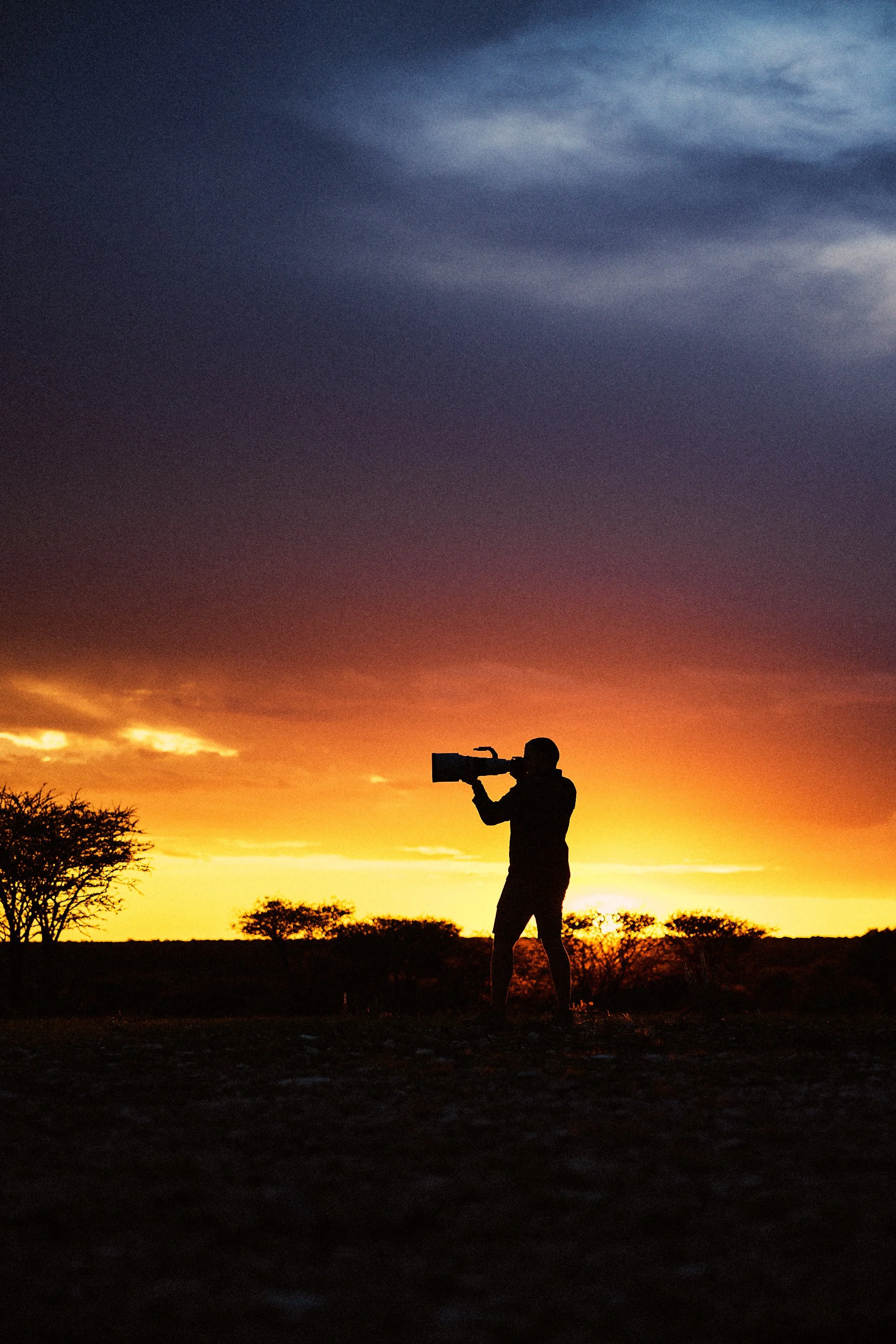5 Safari Photography Mistakes (and How to Avoid Them)
If you’re heading out on your first safari photography trip, this article is for you. And even if you’ve been on safari before, there’s a good chance you’re still making at least one of these common mistakes.
After years of shooting wildlife across Africa and guiding photography tours, I’ve seen the same issues come up again and again. But with a little preparation and the right mindset, you can avoid frustration and come home with stronger images.
These aren’t just about gear—they’re field-tested lessons that can truly make or break your first wildlife photography adventure.
🎯 Want a deeper dive into settings, gear, and safari-ready techniques? Download my free 100-page wildlife photography eBook here.
🎥 Prefer to watch instead? Check out the full YouTube guides and tutorials here!
1. Know Your Camera Before You Go
The biggest mistake I see? Travelers show up with a brand new camera or lens… and end up missing shots while figuring out where the settings are.
You don’t need the latest flagship body. What you need is muscle memory—knowing how to switch focus modes, shift AF points, adjust exposure, or change your frame rate without taking your eye off the viewfinder.
Spend time at home photographing moving subjects—birds, dogs, even passing cars. Practice until settings become instinctive.
2. Don’t Obsess Over Focal Length
Many first-time safari photographers think they need a 600mm or 800mm lens to get anything decent. And yes, reach helps—but some of my favorite wildlife images were captured between 100mm and 300mm.
That’s why I often recommend a versatile zoom like the Canon 100–500mm for first-timers. It’s sharp, easy to handhold, and flexible enough for both portraits and environmental compositions.
And remember—sometimes wider is better. A 200mm shot of an elephant framed against the savannah tells a deeper story than a tight crop of its eye.
🎒 Want to see exactly what I pack for long, remote safaris? Check out: What’s in My Safari Camera Bag.
3. Light Is Everything
Golden hour isn’t just a buzzword—it’s the lifeblood of great safari photography.
The first two hours after sunrise and the last two before sunset offer soft, golden light and peak animal activity. This is when you’ll capture glowing backlight, dramatic silhouettes, and beautiful animal behavior.
Midday? The light is harsh and flat. Colors are washed out, animals are usually sleeping, and the magic is missing.
Instead of chasing mediocre midday photos, use that time to:
Rest and hydrate
Clean your gear
Back up your files
Plan your next outing
Then be ready and energized when the golden light returns.
4. Think Beyond the Animal
Tunnel vision is real. It's easy to focus purely on getting a sharp, close-up portrait and forget everything else.
But truly memorable wildlife photography captures context and storytelling.
Look for:
Animal interactions—grooming, fighting, playing
Dramatic lighting—storms rolling in, dust in the air, golden backlight
Compelling backgrounds—mountains, rivers, plains
Behavior over portraits—an elephant dust bathing, lions yawning at sunset
Sometimes, a wide-angle environmental image will be far more powerful than a tight headshot.
5. Be Ready for the Unexpected
Wildlife doesn’t follow a schedule. You might drive for three hours without much action—then BOOM, a leopard crosses the road or a martial eagle dives from the sky.
That’s why I never pack my camera away during a game drive.
Tips to always stay ready:
Keep one body always ready to shoot (no lens caps!)
Use your default action settings: fast shutter, continuous autofocus
Have spare cards formatted and easy to access
Keep your batteries charged and in your pocket
Wipe your lens and viewfinder frequently
The goal is simple: be one second away from capturing the moment.
Your first safari will be unforgettable. But a little preparation can make it less stressful, more productive, and a lot more fun.
✅ Know your gear like the back of your hand
✅ Embrace flexibility over reach obsession
✅ Prioritize the golden light
✅ Tell compelling visual stories, not just take portraits
✅ Stay ready—because magic happens when you least expect it















